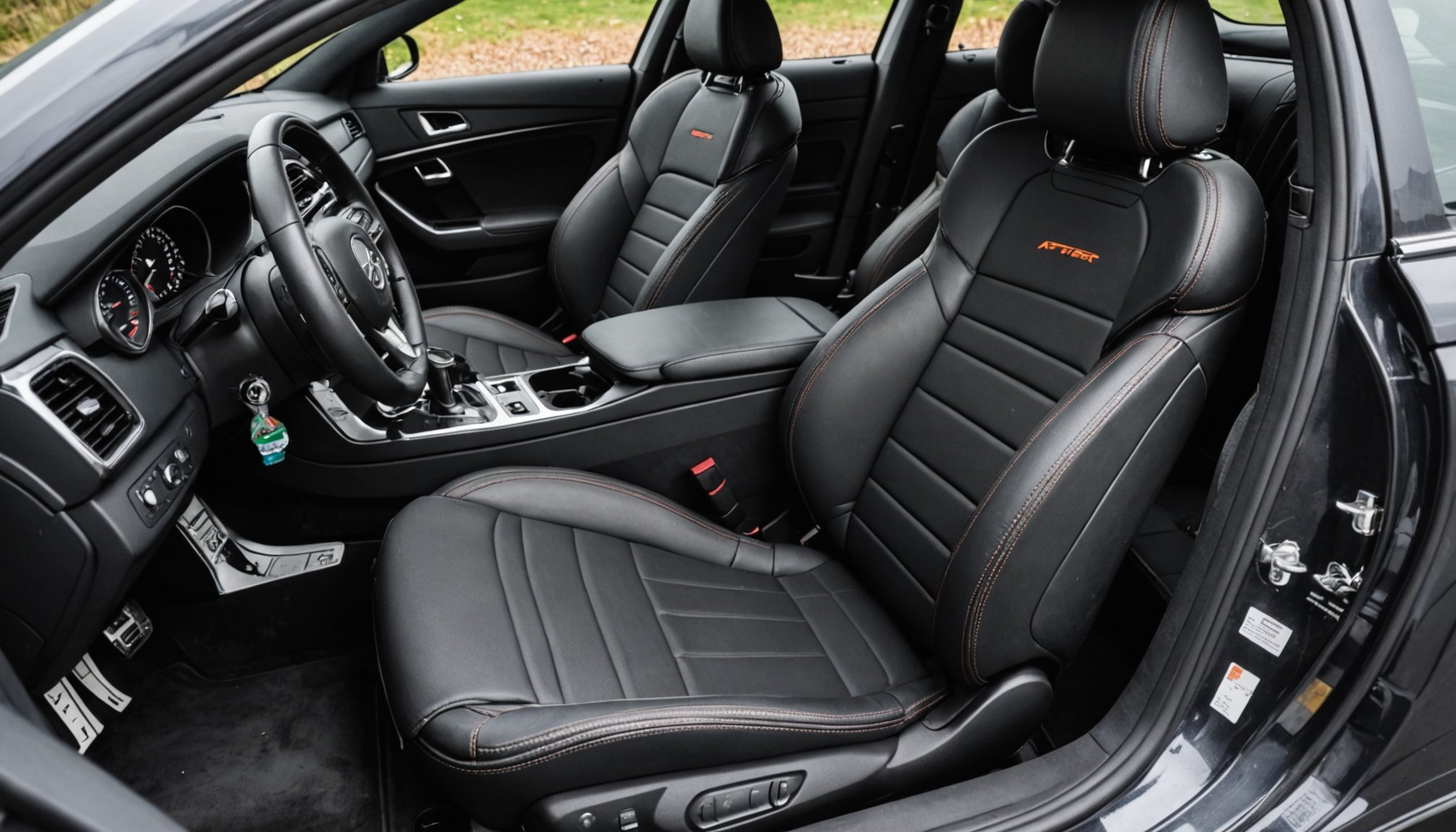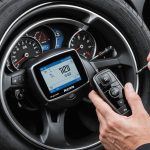Overview of Aftermarket Heated Seat Installation
Heated seats can significantly enhance your driving comfort, especially during the colder months. They provide warmth and coziness, making the commute more enjoyable. In the UK, where the weather often requires such comforts, they are a popular modification for vehicles.
Installation Process Overview
The installation of aftermarket heated seats involves several key steps. Understanding the process helps ensure a smooth and efficient installation. Generally, the procedure involves removing the existing car seats, positioning the heating elements, and connecting these to the vehicle’s power system. It’s crucial to follow an installation guide tailored for your specific car model to avoid complications.
This might interest you : Ultimate tips for custom audio system installation in uk cars: a comprehensive guide
Essential Considerations for UK Car Owners
UK car owners should consider a few important factors before proceeding with the installation. First, you must verify that your vehicle’s electrical system can support the additional power draw of heated seats. Next, check if the modification affects any existing car warranties or insurance policies. Compliance with local vehicle modification laws is also essential, ensuring that your UK car modifications remain lawful and safe. These considerations are vital in maintaining both the functionality and legality of your vehicle post-installation.
Tools and Materials Required
Before commencing the installation of aftermarket heated seats, ensuring you have the right installation tools is vital. The fundamental tools include a screwdriver set, wire strippers, electrical tape, and a multimeter for verifying electrical connections. It’s beneficial to have a pair of pliers and a trim removal tool to prevent damage to your vehicle’s interior.
Additional reading : Ultimate guide to revamping your classic uk car”s fuel system: key steps for an effective upgrade
When selecting a heated seat kit, it’s wise to opt for kits that are specifically rated for your vehicle model. Such kits often contain pre-measured heating pads, wiring harnesses, and control switches. A well-matched kit simplifies the installation process and ensures compatibility with your vehicle’s electrical system.
Additional essential materials may include zip ties for securing wires and heat shrink tubes to insulate connections. Having these supplementary materials on hand can streamline installation and enhance the longevity of your installation. Moreover, using a comprehensive installation guide accompanying your kit helps alleviate any uncertainties during the process.
Equipped with the right tools and materials, you are better prepared to conduct a seamless installation. This preparation not only facilitates efficiency but also supports proper functionality and safety standards for your modified vehicle.
Safety Precautions
When installing aftermarket heated seats, prioritising safety measures is crucial to both the installer and the vehicle. The first step is always to disconnect the battery, minimizing the risk of electric shock or short circuits during the installation. This precaution protects not only your physical wellbeing but also safeguards the vehicle’s electrical system from potential damage.
Understanding your vehicle’s electrical systems is another critical safety measure. Familiarity with electrical safety principles and the specific requirements of your car model can prevent mishaps. Knowledge of these systems ensures that connections are made correctly and that the heated seat wiring is compatible with your vehicle.
Be aware of common safety pitfalls that inexperienced installers might overlook. Avoid hastily cutting into the car’s wiring harness without consulting the installation guide provided with the kit. Such actions can lead to installation errors or even permanent damage to the vehicle’s electrical components.
Additionally, ensure that all installed components, including wires and heating elements, are adequately insulated and secured. Using proper tools and following DIY guidelines can help avoid preventable mistakes, providing a safe and efficient installation process that aligns with UK safety standards.
Step-by-Step Installation Process
When installing aftermarket heated seats, following precise installation steps is crucial for both safety and functionality. This process ensures that the installation is tailored to unique specifications of UK vehicles.
Preparing the Vehicle
Start by detaching and carefully removing the existing seats. This step is vital to create a clutter-free workspace, allowing easy access to essential components. Assess the vehicle’s wiring to ensure it can accommodate the added heated seat wiring; confirm compatibility with your specific make and model.
Installing Heating Elements
Accurately position the heating pads inside the seats. It is important to secure the pads firmly to avoid movement that could affect performance. Check that the pads are not obstructing any mechanisms, such as the seat adjustment or safety features. Proper alignment ensures seamless integration without compromising seat functionality.
Wiring and Electrical Connections
Study and understand the provided wiring diagrams. These guides are indispensable in correctly connecting the heated seats to the vehicle’s power system. Use reliable electrical connectors and verify all connections are secure and shielded from potential wear. Testing the electrical connections confirms that the installation is complete and functioning safely.
FAQs About Heated Seat Installation
When it comes to heated seat FAQs, several common questions arise during the DIY assistance process. Below are clarifications to help ensure a smoother installation and maintenance experience.
Are aftermarket heated seats safe for all vehicles?
Yes, provided they are installed correctly. Always use an installation guide specific to your vehicle to avoid potential hazards. Proper installation ensures safety and compatibility with most UK car modifications.
Will adding heated seats void my vehicle’s warranty?
This varies by manufacturer. It’s essential to review your vehicle’s warranty terms and contact your dealer if unsure. Some warranties may not cover issues stemming from third-party modifications like aftermarket heated seats.
How do I maintain my heated seats post-installation?
Regular checks are crucial. Inspect connections for wear and ensure no wires are exposed. Keeping the seats clean and avoiding excessive moisture will prolong their lifespan. Routine maintenance helps address potential installation errors early.
What if my heated seats stop working after installation?
Start with troubleshooting: check fuses and wiring connections. Faulty installations are common culprits. Refer to your installation guide for specific checks related to your setup. Testing before final seat placement can also preempt common heating seat problems.
Troubleshooting Common Issues
In the realm of aftermarket heated seats, understanding how to tackle common issues can save both time and frustration. Effective troubleshooting is crucial for resolving heating seat problems and preventing installation errors.
Firstly, identify the source of the malfunction. Frequently, issues stem from poor connections or incompatible wiring. Inspect all connectors and ensure each is secure and properly aligned. Loose wiring often results in inefficacy or intermittent functioning of the seat heaters.
Testing components before finalizing the seat installation is advisable. This check helps preempt potential issues. Use a multimeter to verify that the electrical current is flowing properly through the system. If the seat heaters still fail to operate, revisit the installation guide to ensure compatibility with your vehicle’s wiring.
If the problem persists, review all electrical systems for potential installation errors. Common mistakes include failing to adequately insulate connections or using incompatible connectors. Address any missteps promptly to avoid ongoing issues.
Finally, document your troubleshooting process. Keeping a record of the steps taken can facilitate quicker resolutions in the future, maintaining the efficiency and comfort that aftermarket heated seats promise.









